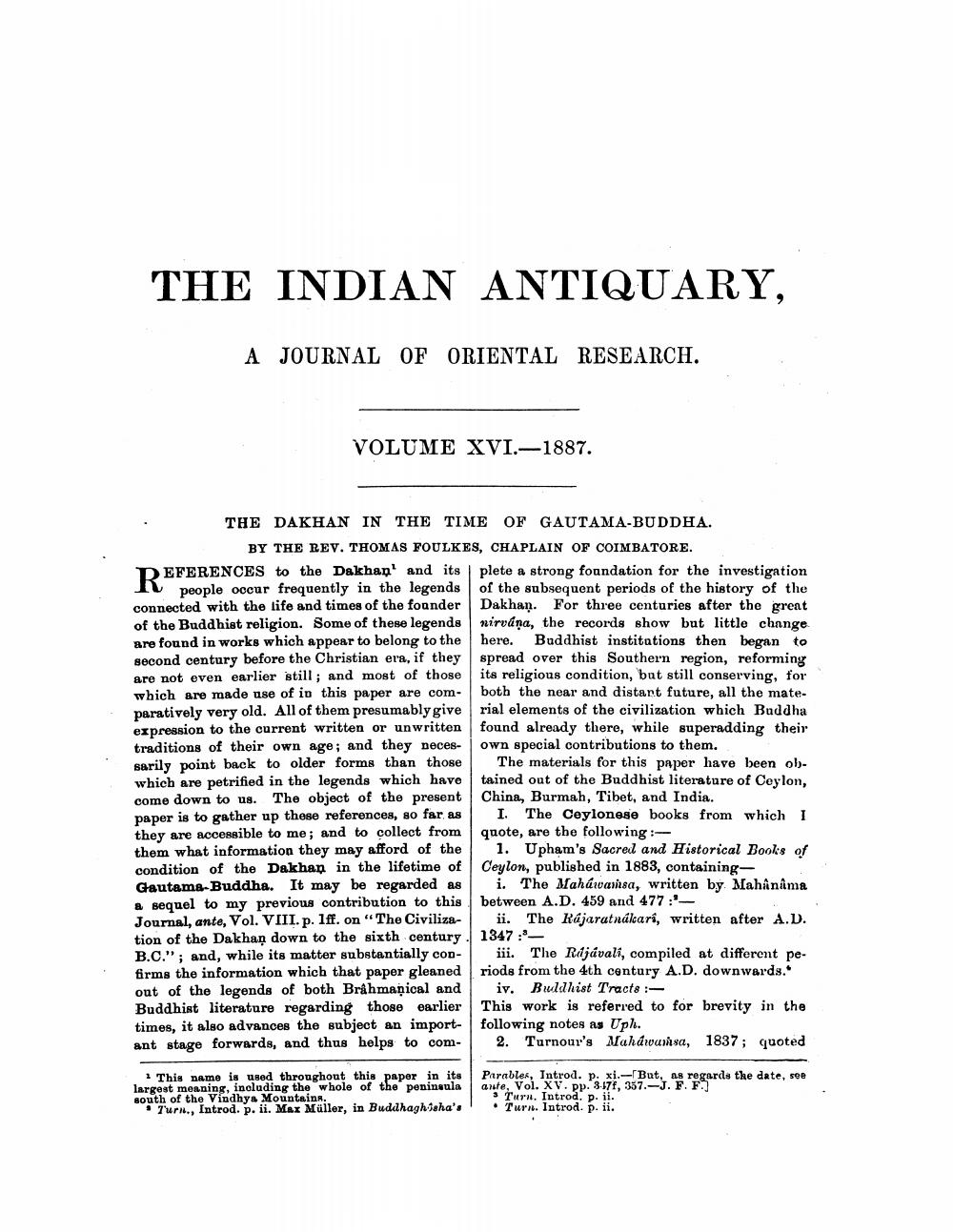Book Title: Indian Antiquary Vol 16 Author(s): John Faithfull Fleet, Richard Carnac Temple Publisher: Swati Publications View full book textPage 7
________________ THE INDIAN ANTIQUARY, A JOURNAL OF ORIENTAL RESEARCH. VOLUME XVI.-1887. THE DAKHAN IN THE TIME OF GAUTAMA-BUDDHA. BY THE REV. THOMAS FOULKES, CHAPLAIN OF COIMBATORE. to people occur frequently in the legends connected with the life and times of the founder of the Buddhist religion. Some of these legends are found in works which appear to belong to the second century before the Christian era, if they are not even earlier still; and most of those which are made use of in this paper are comparatively very old. All of them presumably give expression to the current written or unwritten traditions of their own age; and they necessarily point back to older forms than those which are petrified in the legends which have come down to us. The object of the present paper is to gather up these references, so far as they are accessible to me; and to collect from them what information they may afford of the condition of the Dakhan in the lifetime of Gautama Buddha. It may be regarded as a sequel to my previous contribution to this Journal, ante, Vol. VIII. p. 1ff. on "The Civilization of the Dakhan down to the sixth century. B.C."; and, while its matter substantially confirms the information which that paper gleaned out of the legends of both Brahmaṇical and Buddhist literature regarding those earlier times, it also advances the subject an important stage forwards, and thus helps to com This name is used throughout this paper in its largest meaning, including the whole of the peninsula south of the Vindhya Mountains. Turn., Introd. p. ii. Max Müller, in Buddhaghisha's foundation for the a of the subsequent periods of the history of the Dakhan. For three centuries after the great nirvana, the records show but little change here. Buddhist institutions then began to spread over this Southern region, reforming its religious condition, but still conserving, for both the near and distant future, all the material elements of the civilization which Buddha found already there, while superadding their own special contributions to them. The materials for this paper have been obtained out of the Buddhist literature of Ceylon, China, Burmah, Tibet, and India. I. The Ceylonese books from which I quote, are the following: 1. Upham's Sacred and Historical Books of Ceylon, published in 1883, containing i. The Mahawansa, written by Mahânâma between A.D. 459 and 477:" ii. The Rajaratnákars, written after A.D. 1347 iii. The Rájávali, compiled at different periods from the 4th century A.D. downwards.* iv. Buddhist Tracts : This work is referred to for brevity in the following notes as Uph. 2. Turnour's Mahawamsa, 1837; quoted Parables, Introd. p. xi.-But, as regards the date, see ante, Vol. XV. pp. 3-17f, 357.-J. F. F. 3 Turn. Introd. p. ii. Turn. Introd. p. ii.Page Navigation
1 ... 5 6 7 8 9 10 11 12 13 14 15 16 17 18 19 20 21 22 23 24 25 26 27 28 29 30 31 32 33 34 35 36 37 38 39 40 41 42 43 44 45 46 47 48 49 50 51 52 53 54 55 56 57 58 59 60 61 62 63 64 65 66 67 68 69 70 71 72 ... 408
